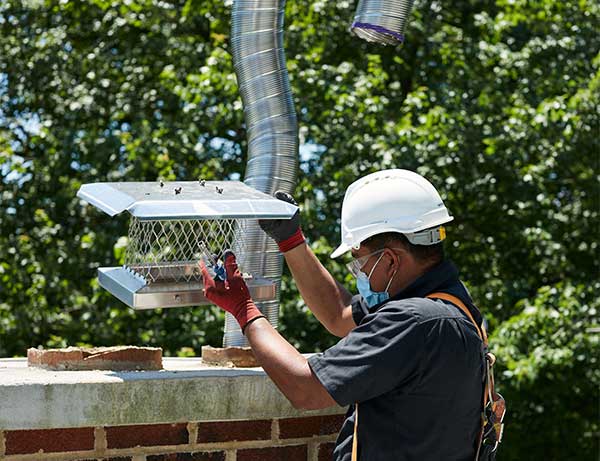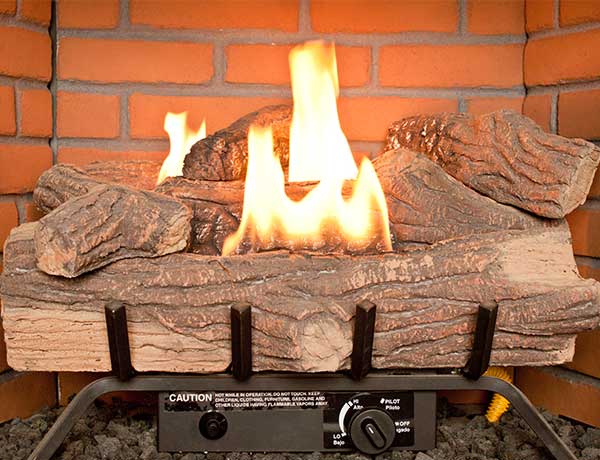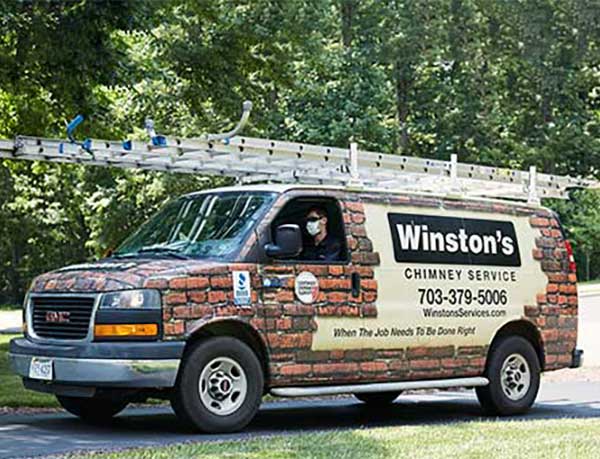Fixing leaky chimneys is one of the things Winston’s Chimney Service does best. Not only can our Chimney Safety Institute of America (CSIA) certified chimney technicians repair the damage done to your chimney by water penetration, but we can also prevent water leaks from occurring again down the line.
To give you a better idea of what we can do to protect your chimney from water leaks, here’s a list of some water penetration prevention services we provide to our customers.
How Can We Help?
Water damages are clearly something to steer clear of, but just how can this be done? We have various products and services that can prevent these bigger issues.
Chimney Cap Installation
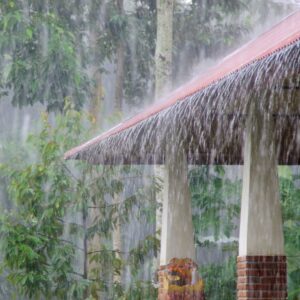 Without a chimney cap on the top of your chimney, your home has a hole in the roof that exposes your house to the elements. Water from rain and melted snow can easily enter your home – and animals and outside debris will likely get in too.
Without a chimney cap on the top of your chimney, your home has a hole in the roof that exposes your house to the elements. Water from rain and melted snow can easily enter your home – and animals and outside debris will likely get in too.
The chimney technicians at Winston’s Chimney Service are trained and experienced in the installation of every type of chimney cap. We can recommend which type is most suitable for your chimney, ensuring your home and fireplace stay better protected for the long haul.
Waterproofing/Water Repellent
To give your chimney the ultimate protection against water penetration, Winston’s Chimney Service can apply a waterproofing agent to seal the masonry materials from water. Our CSIA-certified chimney sweeps only use a waterproofing formula that is 100% vapor permeable and allows your chimney to “breathe.”
This means that, even though water is not allowed to enter from the outside after the waterproofing agent has been applied to your chimney, the water that has previously leaked into your bricks and mortar – and the water vapors produced when you burn a fire in your fireplace – can still escape. We will never use anything like a paint or clear sealant to waterproof your chimney, as these will trap water vapors and moisture inside the chimney and trigger further damage.
Crown Repairs
If your crown isn’t holding up, any water that comes off your cap will easily slide down the sides of your chimney, exposing the masonry to a lot more moisture than necessary. We have the tools and knowledge to ensure your crown is made from appropriate materials and built to meet the necessary requirements.
A well-built crown will be made from a concrete mix, slanted downwards, and at least two inches thick. Trust our experts to get it done right.
Restorations
Sometimes a full restoration job is the only route to take, in which case we’re happy to work with your budget, schedule, and vision to get your system back into tip-top shape for the burning season.
How Is Water a Threat to Chimneys?
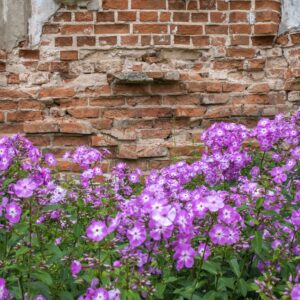 Water can cause a surprising amount of damage to your seemingly strong and durable masonry because bricks and mortar are actually quite absorbent. If not adequately protected, they will soak in pretty much any moisture that comes its way.
Water can cause a surprising amount of damage to your seemingly strong and durable masonry because bricks and mortar are actually quite absorbent. If not adequately protected, they will soak in pretty much any moisture that comes its way.
This leads to your structure crumbling, cracking, and breaking down until it eventually becomes unsafe for use. And it invites some especially big problems come winter… Now, we tend to have fairly mild winters here throughout the Northern VA area, but that doesn’t mean we’re immune to below freezing temperatures from time to time. What happens during these times is that the water in your brickwork freezes and expands, which then puts pressure on your system and causes cracking – and creates more pathways for water to enter down the line.
Other water-related chimney damages might include:
- Rust: Your metal components (like the chase cover, chimney cap, flashing, etc.) could face some serious rusting and decay if installed incorrectly. Another issue is that some aren’t made from reliable materials (as is the case with the majority of stock covers that come with prefabs units).
- Wood Rot: When water starts breaking down your chimney, you’ll notice other areas of your home suffering, too. One of these areas is any adjacent woodwork to your fireplace. As water enters, it will weaken these spots significantly and could trigger rotting and decay.
- Ceiling Stains: Notice water spots on the walls and ceiling around your fireplace? There’s a good chance your leaky chimney is the culprit behind it.
- Mold Growth: Both your home and your chimney could be subjected to harmful mold and mildew growth if you start to experience leaks and water damage. This isn’t just costly and time-consuming to remove… but it can really affect your indoor air quality, too!
- Discoloration: From red rust stains to green mold growth to white efflorescence and more, your system could face all types of discoloration due to water-related issues. This is unsightly and a clear sign of trouble ahead if you don’t have it addressed promptly.
- Liner Damage: Your liner plays an important role in protecting your home and masonry, and it needs to be installed correctly and in good shape in order for your fireplace to function safely and efficiently. If water is able to compromise it, your chimney, home, and family could start facing some serious risks every time you go to light a fire.
- Clogging: As your mortar joints become weaker and your liner decays, parts of your chimney could easily crumble into your flue and form blockages. Poor airflow is always bad news when it comes to your fireplace, so this is definitely something to avoid.
Now, as a homeowner, watching out for things like cracking, big spots of discoloration, and interior home damage can help you spot issues early and before they become worse. You may even be able to smell issues – creosote and water can trigger an unpleasant campfire or burnt barbecue smell, or you might notice a musty, mildew-y odor, too.
That said, all too often, chimney damages are hidden away and hard to spot unless you have a trained eye. Which is why scheduling annual inspections is so essential. If you have yet to get yours booked, springtime is an ideal time to get it done. Call our techs today to schedule!
We’re Here to Help
The experienced masons at Winston’s Chimney Service can repair any water-damaged bricks and mortar and improve the integrity of the structure of your chimney. If you have noticed water leak damage to your chimney, contact us today.
We can also prevent further deterioration to the masonry materials of your chimney from water penetration. Call or book online now to get started.

